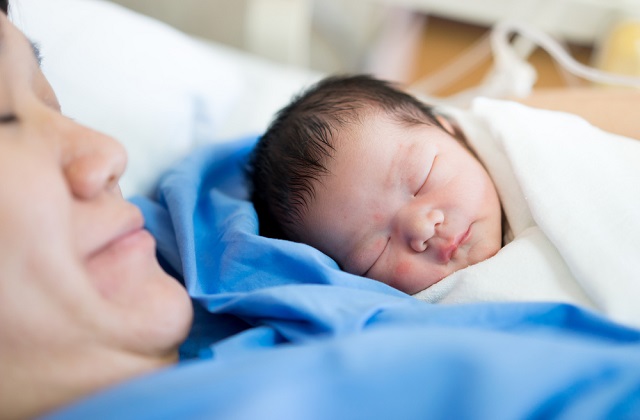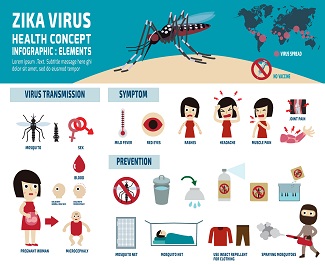Introduction to Vaginal Birth After Caesarean Section
"Once a C-section, always a C-section." This is what we often hear. But it is not true for everyone. In fact, the American Congress of Obstetricians and Gynecologists has recommended Vaginal Birth After Caesarean (VBAC) as a safe and appropriate choice for most women who have had a prior C-section. According to KK Women's and Children's Hospital, the success rate for a VBAC is between 60% and 70%.
Who may not be suitable for VBAC?
1.Classical incision or T-shaped incision in prevision C-section. If the previous C-section resulted in a classical(also called vertical) incision) or a T-shaped incision, the doctor will not recommend VBAC as there is a higher risk for uterine rupture.
2.Labor dystocia: If your previous C-section was because of labor dystocia (abnormally slow or difficult labor) or contracted pelvis, the doctor may not recommend VBAC.
3.Multiple C-sections: Your chance of a successful VBAC goes down with multiple C-sections. Not every physician will feel comfortable working with you to try VBAC after a second C-section. Nearly no physician will try it after three or four C-sections.
4.Unexpected tear in the previous caesarean. If the previous caesarean section was complicated by unexpected tears in the uterus, VBAC may not be suitable.
5.Health complications: An emergency C-section can be especially dangerous if you have a condition such as a lung disease or a heart diseases or severe hypertension as the pregnant women may not be able to endure the physical stress of a vaginal delivery. If the expecting mother had undergone an operation on the uterus to remove fibroids, VBAC may not be suitable as the previous operation could have resulted in the weakening of the muscle wall of the uterus and increase the likelihood of uterus rupture during labour.
6. Having a large baby: gynecologist will not recommend VBAC if your baby is large.
7. Going past your due date: If you go beyond 40 weeks of pregnancy, many doctors will not recommend VBAC because of concerns for an increased risk of uterine rupture.
8.Current pregnancy: Certain conditions such as low-lying placenta or abnormal presentation of the baby in the present pregnancy may prevent a safe vaginal delivery.
A good candidate for VBAC
1.Younger women: A 2007 study found that women younger than 35 were more successful and had fewer complications during a VBAC.
2.Horizontal Incision: A low-transverse (horizontal) uterine incision is the optimal incision for VBAC.
3.C-section was performed for baby's health. Your chance of VBAC success increases if your C-section was for the baby's health, not because of the actual labor process. Examples include a breech baby or abnormal fetal heart rate tracing.
What are the advantages Of VBAC?
First, a repeat C-section significantly increases the risk of complications such as of infection, injury to adjacent organs, abnormal implantation of the placenta, and placenta previa, in which the placenta completely or partially covers the cervix.
Because C-sections become more risky with every subsequent surgery, you may want to consider VBAC, especially if you plan to have a large family.
A successful vaginal birth is beneficial to the mother as it is generally associated with less bleeding, less blood transfusion, less infection, faster recovery with shorter hospital stay and less post-delivery pain and complications.
Lastly, a successful VBAC is cheaper than caesarean section birth.
What are the possible complications associated with VBAC?
The primary concern associated with VBAC is the risk of uterine rupture or tear, but it is rare, certain factors can increase its chance of occurrence.
Although it occurs rarely, uterine rupture can be life-threatening for both the mother and child.
In addition, if the trial of labour fails and the mother needs an emergency caesarean section, there may be a higher risk of complications for the mother.
In terms of cost, failed VBAC would also be higher.
Frequently Asked Questions (FAQ)
1. What is VBAC?
VBAC stands for Vaginal Birth After Caesarean. It refers to giving birth vaginally after having one or more previous C-sections. According to KK Women's and Children's Hospital in Singapore, the success rate for VBAC is around 60% to 70%.
2. Who is a good candidate for VBAC?
You may be a good candidate for VBAC if:
- You are under 35 years old.
- Your previous C-section used a low transverse (horizontal) incision.
- Your previous C-section was due to non-recurring reasons, like breech presentation or fetal distress, not labor problems.
3. Who is not suitable for VBAC?
VBAC may not be recommended if you have:
- A classical (vertical) or T-shaped uterine incision from a previous C-section.
- A history of labor dystocia or contracted pelvis.
- Had more than two previous C-sections.
- Uterine tears during a previous C-section.
- Serious health conditions (e.g., heart or lung disease, severe hypertension).
- A large baby or pregnancy beyond 40 weeks.
- Placenta previa or abnormal fetal presentation in your current pregnancy.
4. What are the benefits of VBAC?
The potential advantages of VBAC include:
- Avoiding another surgery and its associated risks (infection, injury to organs, blood loss).
- Shorter hospital stay and faster recovery.
- Less post-delivery pain and complications.
- Lower cost compared to a repeat C-section.
- Better for women planning multiple pregnancies.
5. What are the risks of VBAC?
The primary risk of VBAC is uterine rupture, which is rare but serious. If VBAC fails and an emergency C-section is needed, the risk of complications and cost is higher.
6. How can I prepare for a VBAC?
To prepare for a VBAC:
- Discuss your medical history and delivery options thoroughly with your OB-GYN.
- Choose a hospital equipped for emergency C-sections.
- Maintain a healthy pregnancy and attend childbirth education classes.
- Understand both the benefits and risks of VBAC before making a decision.
Subscribe to receive newsletter on pregnancy and parenting in Singapore.


